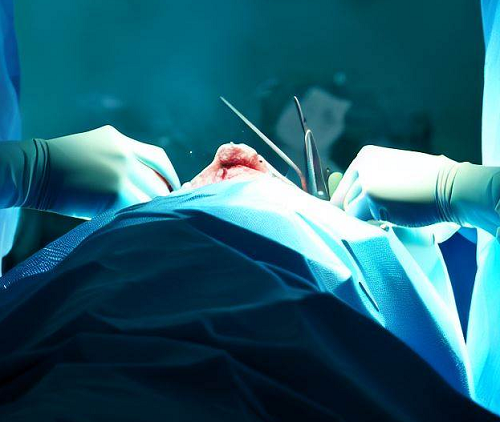What Linea Alba Hernia?
Linea alba hernia, is a condition in which abdominal contents protrude through a weak spot in the linea alba, a fibrous tissue that runs vertically down the middle of the belly. An abdominal bulge or swelling that may be felt or seen is indicative of this form of hernia. Although linea alba hernias can happen at any age, adults are more likely to develop them than children, especially if they have had stomach surgery or experienced increased abdominal pressure as a result of things like obesity or pregnancy.
Linea Alba Hernia Ultrasound
A transducer is softly pushed across the abdomen during the ultrasound procedure, emitting high-frequency sound waves that produce precise images of the internal tissues. The midline of the abdomen is the area that the ultrasonologist concentrates on while assessing a linea alba hernia in order to look for any abnormal bulging or defects in the linea alba.
Typically, the linea alba defect is visible as a localized bulge or protrusion of abdominal contents on ultrasound scans. Gentle compression or manual reduction under ultrasound supervision can be used to determine the size and reducibility of the hernia. Blood flow inside the hernia sac can be evaluated with the aid of Doppler ultrasound.

Linea Alba Hernia Symptoms
Visible Bulge or Lump: A visible bulge or lump on the abdomen is one of the main signs of a linea alba hernia.
Pain and Discomfort: Many people who have a linea alba hernia have pain or discomfort in the affected area.
Vomiting and Nausea: A linea alba hernia may occasionally cause nausea and vomiting as well as other gastrointestinal problems.
Digestive Issues: Linea alba hernias can result in digestive issues such acid reflux, or heartburn.
Linea Alba Hernia Causes
Abdominal Wall weakening: A linea alba hernia is mostly caused by a weakening or defect in the abdominal wall. This weakness may be inherited from birth or developed later in life as a result of aging, trauma, or surgery.
Pregnancy and childbirth: These two life events greatly raise the chance of acquiring a linea alba hernia. The linea alba is more vulnerable to herniation because of the increased strain caused by the expanding abdominal wall during pregnancy.
Obesity and Excessive Weight: Both obesity and excess body weight can play a role in the emergence of a linea alba hernia. By exerting pressure on the abdominal muscles, the extra weight weakens the linea alba and raises the risk of herniation.
Chronic Coughing and Straining: Frequent and forceful coughing and excessive straining during bowel movements can strain abdominal muscles and raise the risk of a linea alba hernia.
Linea Alba Hernia Repair or Treatment
Surgical correction is frequently advised for linea alba hernias that are bigger or bothersome. The purpose of surgery is to strengthen the linea alba and repair the abdominal wall defect. There are numerous surgical repair methods that can be used, including:
Open Repair
In an open repair surgery, the herniated tissue or organs are placed back into the abdominal cavity through an incision created over the hernia site. The weak abdominal wall is then strengthened with stitches or a mesh patch to stop the occurrence.
Laparoscopic Repair
Laparoscopic repair is a minimally invasive surgical method that includes making many tiny incisions in the abdomen. These incisions are used to insert specialized tools and a camera to repair the hernia from within. This method has the advantages of less scarring and faster recovery.
Robotic-Assisted Repair
Laparoscopic surgery with the use of robotic arms guided by a surgeon is known as robotic-assisted hernia repair. Through the use of this approach, the repair procedure can be performed with increased precision and agility.








0 Comments